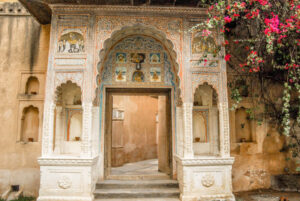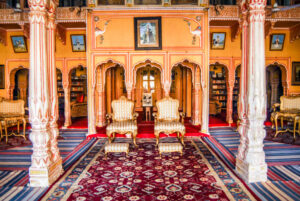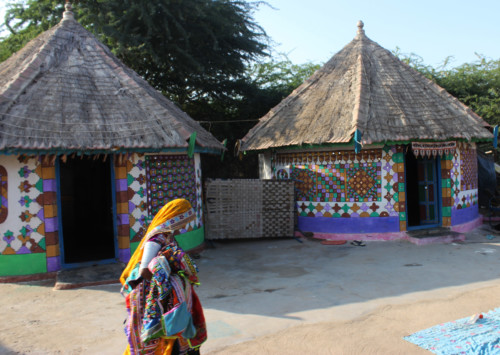Shekhawati: World’s largest open air art gallery
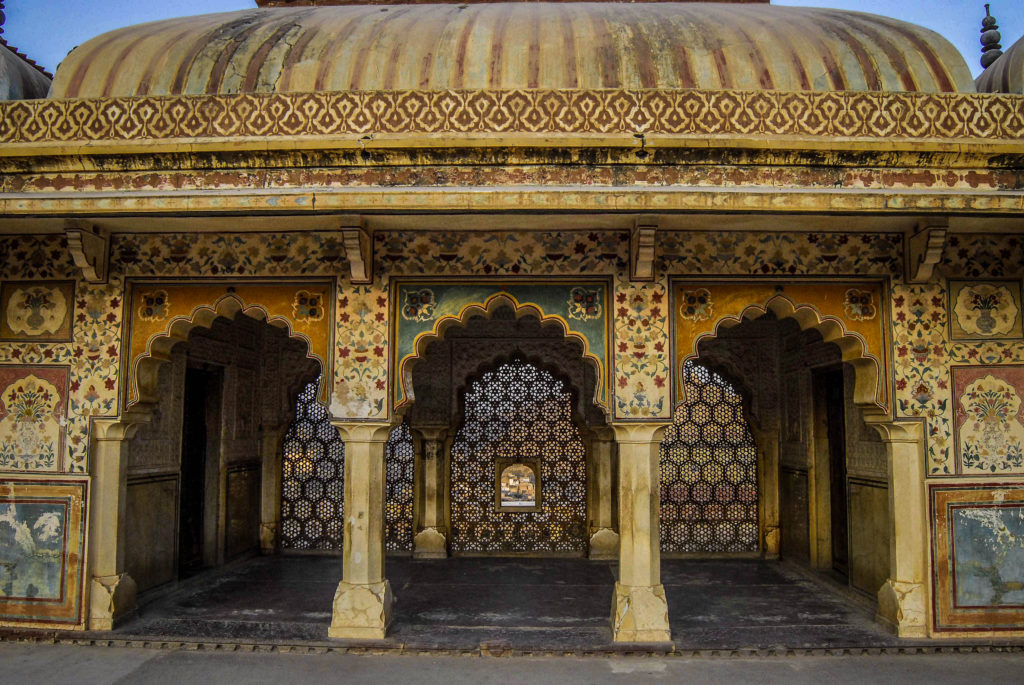
Shekhawati is a rich treasure house of havelis with murals as well as a unique style of architecture (MIG photos)
Shekhawati, around 100 km from Jaipur, the capital of Rajasthan, is one of the lesser explored regions of the state even though the region boasts of numerous majestic havelis (mansions) and is widely appreciated for its numerous murals that adorn on havelis. With towns like Sikar, Churu and Jhunjhunu at its centre, the Shekhawati is a rich treasure house of havelis with murals of mythological characters as well as a unique style of architecture that is slowly gaining popularity.
“I have a keen interest in documenting offbeat and lesser-known destinations in India and also about architecture. When I decided to visit Rajasthan, I came to know about Shekhawati through some articles. Shekhawati is one such place which offered me both the experiences together, it’s really a unique place,” says Divyakshi Gupta, travel blogger from Mumbai.
“I loved the architecture and the unparalleled profusion of wall paintings. It has beautiful and intricate giant doorways of mansions and the beautiful carvings there attracted me tremendously as did the frescoes. There are countless havelis scattered all across the region. Places like Shekhawati are very rare to find in other parts of the country,” Gupta tells Media India Group.
Fresco is a traditional method of painting where the artwork is painted directly on a wall or ceiling, it is one of the oldest known forms of painting and it needs the artist to have a thorough knowledge of arts, mediums and techniques.
In many parts of India, frescoes are done with natural pigments which are applied directly on fresh and wet lime plaster. The method of Fresco was cheaper supplement of marble as the application impart a smooth and glossy finish to the walls.
“The fresco paintings on the walls depict all kinds of mythological stories like Mahabharata, Ramayana and stories of the royalty in Rajasthan. Actually it is a fusion of mythology frescos and modern designs,” says Gupta.
Tourists say that Shekhawati is truly a blessing for all art lovers who are into architecture and murals, adding that the Shekhawati style of architecture is unique in itself.
“Shekhawati is so unique because of all the beautiful havelis and the frescoes painted on them and what I liked the most is that it is very authentic,” says Christophe Cappelli, a photographer from Amsterdam who visited Shekhawati four years ago.
“Some havelis were also well-preserved, but also many are not because of lack of maintenance and unfortunately many havelis were abandoned,” Cappelli tells Media India Group.
“I also visited Nawalgarh, Mandawa, Bundi, Jaipur, Chittorgarh, Jodhpur, Jaisalmer, Bikaner and Shekhawati. All the places were fabulous and the cultural heritage of the state attracted me the most,” says Chappelli.
But there seems to be hope for the havelis of Shekhawati as the vibrant Indian film industry has discovered a passion for using the magnificent mansions as a backdrop for its movies. This has led to renovation of several havelis and has also started a trickle of tourists who visit the region after having seen the beautiful sights on the silver screen.
Also, to cater to the rising tourist traffic, some of the havelis have been converted into boutique hotels, generating a constant revenue source for the owners who have a reason now to preserve their heritage. “The havelis converted into hotels are really well maintained. All the mansions show how wealthy the owners were and definitely there will be a better maintenance if a haveli is converted into a hotel,” says Gupta.
Shekhawati, home of the rich Marwaris
Shekhawati was once a home to the Marwaris, one of the wealthiest communities of India. The region which lies midway between Gujarat and Delhi, was used by traders from Middle-East Asia and China in the olden times, due to which it became a key centre of trade.
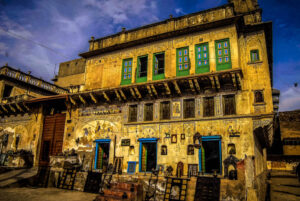
The innumerable colourful walls reflect those rare and forgotten arts of Rajasthan (MIG photos)
In the 19th century, Shekhawati had become the backbone of an extensive commercial trading hub, provided better opportunities and accessibility to nearby commercial centers like Jaipur and Bikaner and Shekhawati turned into a trade magnet for many merchants.
Due to increasing wealth and prosperity of the Marwari community, they began building opulent havelis and decorated them with frescos and other paintings. As wealth and affluence multiplied over decades, it began reflecting in the grandeur of their havelis.
Often, there was spirit of competitivity between leading Marwari families over whose haveli was the grandest of them all. This competition for beauty brilliantly worked in favor of Shekhawati, as every merchant wanted his mansion to be unique, most ornate and the best amongst the rest.
All these innumerable colourful walls reflect those rare and forgotten arts of Rajasthan. Over the centuries as the Marwari community dispersed all across India, and even overseas, following the footsteps of trade and as new trade and business hubs emerged. However, their beautiful bastions recount the story of their opulence and their love for beauty even to this day.

